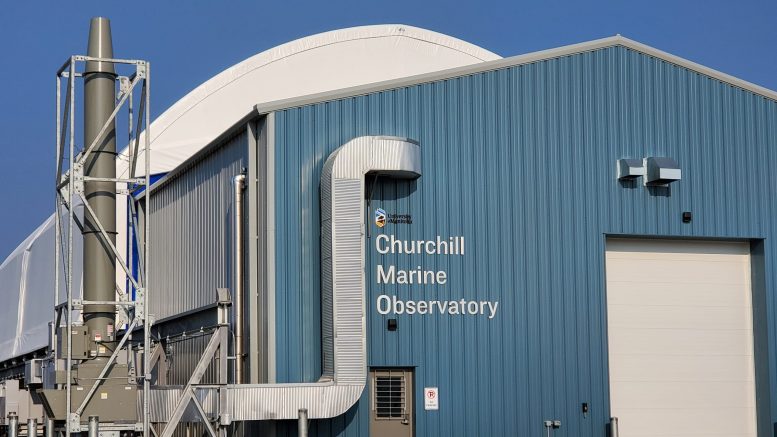The U of M Centre for Earth Observation Science has opened the Churchill Marine Observatory (CMO), a world-class research facility near North America’s only arctic deep-water port in Churchill, Manitoba.
This new facility strengthens Canada’s leadership in arctic climate and environmental research. The CMO is one of the few multidisciplinary research units created by the U of M Centre for Earth Observation Science. It focuses on studying the impacts of the rapidly changing arctic environment, particularly on marine transportation, climate change and oil spill response.
Michael Benarroch, president and vice-chancellor of the U of M, said “for many years the University of Manitoba has been building partnerships with Inuit and First Nations communities and organizations throughout the artic to further our collective understanding of the challenges and opportunities climate change will bring our province.” Benarroch stated that “we have been asking how we can ensure our work brings truly positive benefits to northern communities through responsible economic developments and environmental protections.” The CMO will answer many pressing questions about responsible economic development and environmental protection in northern communities.
Leaders from northern Manitoba and the Kivalliq region of Nunavut, alongside the U of M vice-president (research and international), and the U of M president and vice-chancellor, attended the grand opening. Special guests included the Honourable Renée Cable, minister of advanced education and training; His Worship Simionie Sammurtok, mayor of Chesterfield Inlet; and His Worship Mike Spence, mayor of Churchill.
At the grand opening, Dr. Feiyue Wang, associate dean of research and innovation at the Clayton H. Riddell faculty of environment, earth, and resources and lead on CMO project stated that the “UM has long been a global leader in arctic research with a specific focus on climate change and its effects.” Wang continued by saying “at the CMO our research is intensifying around scientific, technological and socio-environmental issues as the arctic opens for better or worse, as never before.”
The CMO was funded by a $45 million investment from the Canada Foundation for Innovation, the provinces of Manitoba and Alberta and other federal and private partners. This funding has provided cutting-edge research infrastructure which includes three core facilities.
The first, the Ocean-Sea Ice Mesocosm, features outdoor pools for controlled oil spill experiments and studies on ice melt interactions. The second is the Environmental Observing System, which consists of advanced monitoring stations along the Hudson Bay shipping channel. The third core facility at the CMO is a 65-foot former fishing vessel, Research Vessel William Kennedy, which offers modern ern facilities for arctic science research cruises.
The CMO also honours the legacy of the late Dr. David Barber, an arctic research pioneer. A permanent plaque will be placed in his memory at the CMO. In addition to research, the CMO will engage in community outreach, including the Churchill Barber Science Symposium, where residents can discuss arctic research with experts.
Several research projects which will include international participation will begin at the CMO in November 2024.


